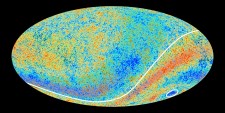
One possible clue for this theory can be found in existing data from the cosmic microwave background (CMB) radiation, which supposedly contains traces of long-dead black holes from previous universes.
In Penrose and similarly-inclined physicists' history of space and time (which they call conformal cyclic cosmology, or CCC), universes bubble up, expand and die in sequence, with black holes from each leaving traces in the universes that follow. And in a new paper released Aug. 6 in the preprint journal arXiv, Penrose, along with State University of New York Maritime College mathematician Daniel An and University of Warsaw theoretical physicist Krzysztof Meissner, argued that those traces are visible in existing data from the CMB.More details about how this cycle could work can be read at LiveScience. The site notes this isn't the first time Penrose put out a paper about past universes, he and physicist Vahe Gurzadyan made a similar claim in a 2010 paper, but that publication received a lot of criticism from other scientists.